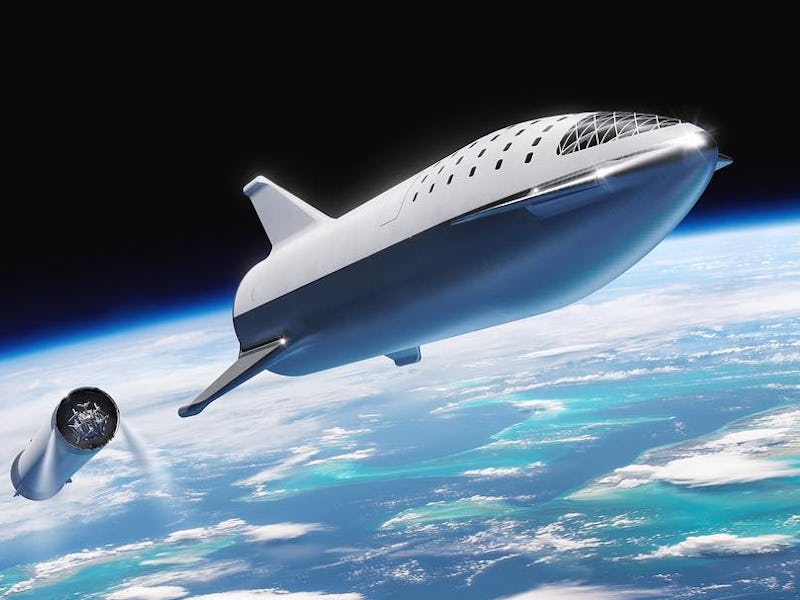SpaceX's Mars-Bound BFR Tests Nearly Here as Final Tank Delivered

SpaceX is almost ready to start testing the BFR, its under-development rocket set to support a manned mission to Mars. The company has been working to complete its test site at Boca Chica, Texas, where the rocket will undertake “hop tests” of a few hundred kilometers before setting a course for the red planet. A representative confirmed on Friday that the company has now received the final major ground tank system.
The rocket is a key part of SpaceX’s future plans, which involve a manned mission to Mars as early as 2024 and a manned mission around the moon in 2023. The test site is a big project, and SpaceX has shipped over 300,000 cubic yards of locally-sourced soil to finish construction. Sean Pitt, the company’s communications specialist, told KRGV: “The ongoing construction of our launch pad in South Texas is proceeding well. SpaceX has now received the final major ground system tank needed to support initial test flights of the Big Falcon Spaceship.”
The BFR.
See more: Elon Musk Details Timeline for SpaceX BFR Sending Humans to Moon and Beyond
The “hop tests” are the first step to these missions. CEO Elon Musk described the plan as “fly out, turn around, accelerate back real hard and come in hot to test the heat shield because we want to have a highly reusable heat shield that’s capable of absorbing the heat from interplanetary entry velocities.” If they’re successful, the company will move on to high altitude, high-velocity flights as early as 2020. These tests will come alongside tests of the booster. The company will then complete a number of full test flights before sending any humans onto a BFR. Japanese billionaire Yusaku Maezawa, who plans to take a group of artists around the moon on the BFR, could be one of the first non-test passengers.
The Texas facility has been gradually taking shape. In July, local news reported that SpaceX took delivery of a 95,000-gallon liquid oxygen tank, capable of holding around the same as 20 tanker trucks. The company also completed a 600-kilowatt solar array and two ground station antennas, the latter of which may be used for tracking crewed Dragon missions to the International Space Station.
Musk may release more details about these tests when he visits the SpaceX subreddit over the next week or so to answer fan questions.
Until then, the company has produced a number of visuals around what future Mars bases may look like.